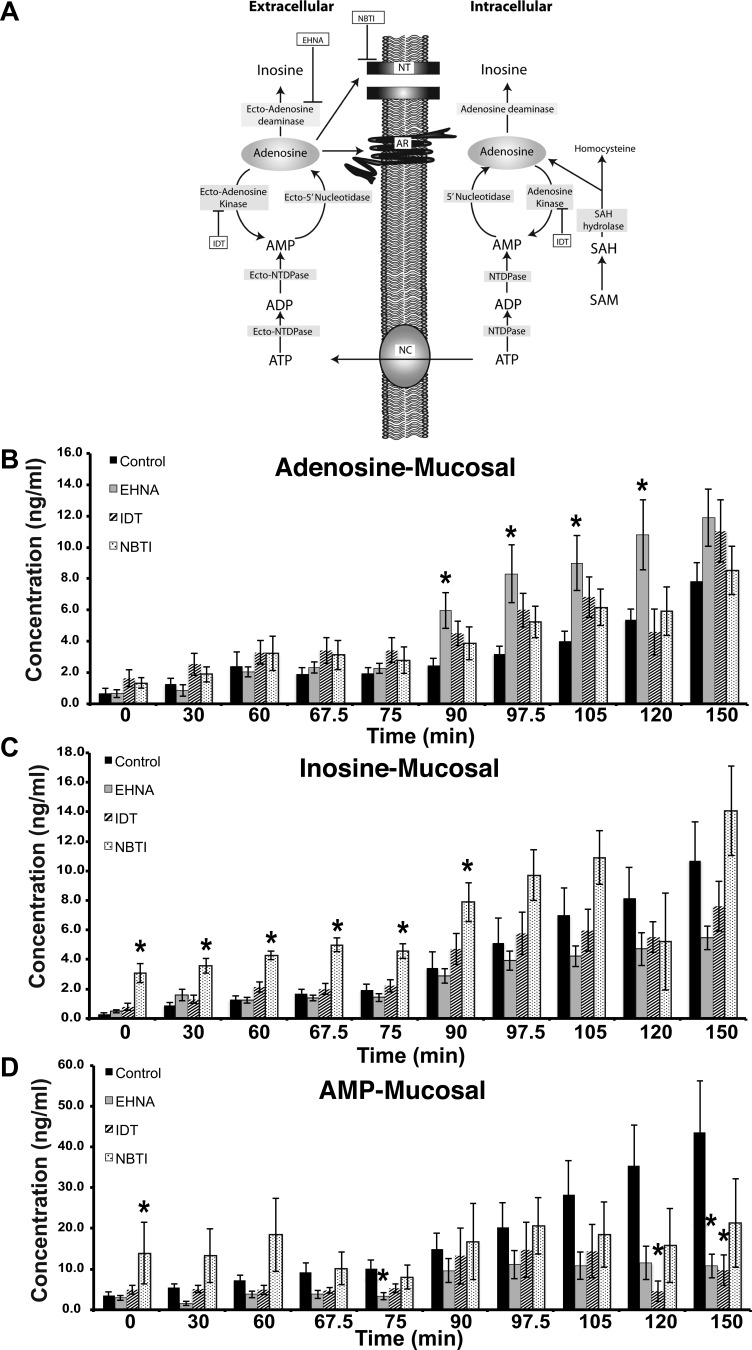Fig. 1.
Adenosine turnover at the mucosal surface of the uroepithelium. A: schematic of adenosine biosynthesis and turnover in the intracellular and extracellular spaces. Intracellular adenosine is formed either by the conversion of S-adenosylmethionine (SAM) to S-adenosylhomocystine (SAH) to adenosine, or by the hydrolysis of ATP. The latter is expelled from the cells via nucleotide channels (NC). The extracellular ATP is converted to adenosine by the ecto-nucleotide triphosphate diphosphohydrolases (NTDPases), ecto-NTDPase (CD39), and ecto-5′ nucleotidases (CD73). Extracellular adenosine can have multiple fates: 1) transport back into the cell by nucleoside transporters (NT), 2) binding to and activation of adenosine receptors (AR), 3) metabolism to inosine by adenosine deaminase, or 4) conversion to AMP by ecto-adenosine kinase. EHNA, erythro-9-(2-hydroxy-3-nonyl)adenine hydrochloride; IDT, 5-iodotubericidin; NBTI, S-(4-nitrobenzyl)-6-thioinosine. B-D: rabbit uroepithelium was mounted in Ussing stretch chambers and pretreated with the indicated drug for 60 min before the start of the experiment. The tissue was left in its quiescent state for 60 min and then stretched by increasing the fluid in the mucosal chamber for 30 min. The tissue was then left in this stretched state for an additional 60 min. Samples were drawn at the indicated times and then analyzed by mass spectrometry to determine the concentration of adenosine, inosine, and AMP. The experiment was performed on 3 separate occasions and the data are expressed as means ± SE (control n = 7, EHNA n = 7, IDT n = 7, NBTI n = 4). *Statistically significant differences (P < 0.05) between control samples and treated ones.

